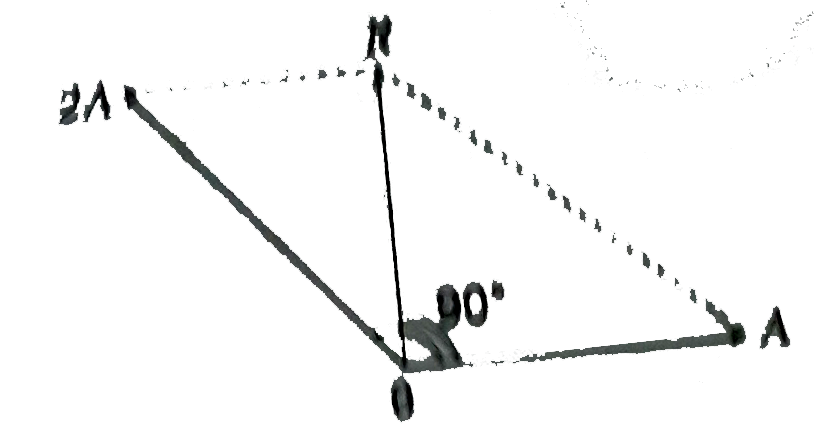The resultant of two forces,one double the other in magnitude,is perpendicular to the smaller of the two forces.The angle between the two forces is
120∘
135∘
90∘
150∘
The correct Answer is:A
(a) We have ,tan90∘=2AsinθA+2Acosθ=∞

∴A+∘Acosθ=0
orcosθ=−12orθ=120∘
Topper's Solved these Questions
Similar Questions
The resultant of two forces cannot exceed
View SolutionTwo forces with equal magnitudes F act on a body and the magnitude of the resultant force is F /3. The angle between the two forces is
View SolutionTwo force F1 and F2 are acting on a body. One force is double that of the other force and the resultant is equal to the greater force. Then the angle between the two forces is :-
View SolutionTwo forces F1 and F2 are acting on a body. One force is double that of the other force and the resultant is equal to the greater force. Then the angle between the two forces is
View SolutionTwo forces, each of magnitude F have a resultant of the same magnitude F. The angle between the two forces is
View SolutionTwo forces, each of magnitude F have a resultant of the same magnitude F. The angle between the two forces is
View SolutionResultant of two vectors one having magnitude twice of other is perpendicular to the smaller vector then find the angle ( in∘) between the vectors ?
View SolutionThe resultant of two forces acting an anlge of 120∘ is 10 kg wt and is perpendicular to one of the forces. That force is
View SolutionSquare of the resultant of two forces of equal magnitude is equal to three times the product of their magnitude. The angle between them is
View SolutionSquare of the resultant of two forces of equal magnitude is equal to three times the product of their magnitude. The angle between them is :
View Solution
